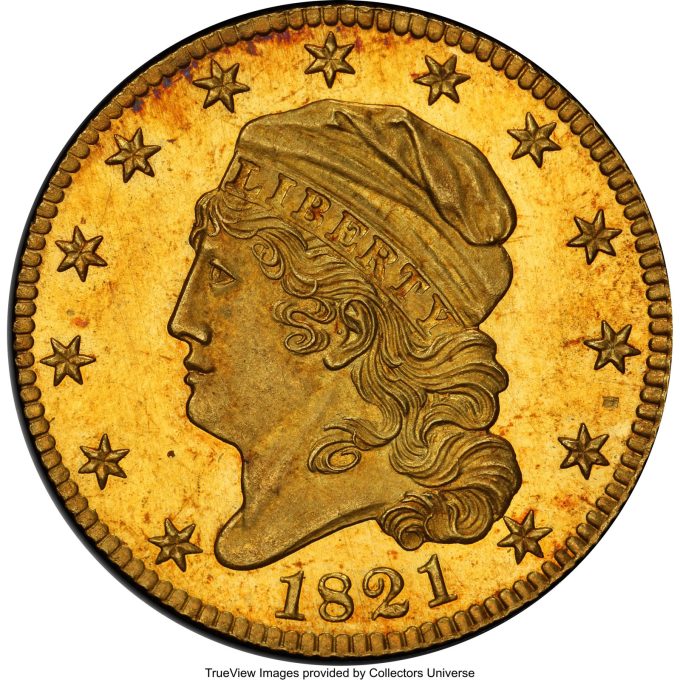The market for rare United States coins enjoyed a banner year in 2022 with many hundreds of price records set for individual coins, according to an analysis by CDN Publishing (www.greysheet.com), publishers of the Greysheet family of numismatic market price guides.

"Continuing the momentum from 2021, we estimate the overall U.S. rare coin market exceeded a record $6 billion in total volume for the year in 2022," said Patrick Ian Perez, CDN Vice President.
"Using data available to us, more than $560 million worth of U.S. rare coins were sold via public auction, marking the third consecutive year this aggregate total has increased. For the first time, 16 individual U.S. coins sold for greater than $1 million, and an additional two numismatically-related items sold for more than $1 million. Thirteen of these seven-figure items were sold by Heritage Auctions," he explained.
The three most valuable U. S. coins to sell at public auction the past year were all greater than $4 million each, with Heritage Auctions selling two and Stack’s Bowers Galleries selling one. All three were classic United States gold coins from the 19th to early 20th century.
Heritage Auctions sold more than $347 million in United States rare coins for the year, while four other major auction firms contributed to the remaining total referenced above. Stack’s Bowers, the second largest U.S.-based numismatic auction company, hammered down $131 million worth of United States coins, a significant year-over-year increase. Across all categories, they sold $260 million worth of numismatic items in 2022.
Additionally, more than $55 million worth of rare United States paper money was sold at auction in 2022. Of this total, Heritage Auctions sold more than $37 million. The most valuable piece of U.S. currency sold this year realized $750,000, while an additional 24 banknotes sold for greater than $100,000.
Not included in these totals were the record numbers of ancient and world coins sold by U.S.-based auction firms, or U.S. coins sold by foreign-based firms, which also contained a slew of price records.
"Going into 2023, the market for U.S. coins starts off with a solid foundation, but there are indications of cooling off, as well," said CDN Publisher John Feigenbaum.
"However, it is also clear that the numismatic market has been spared the severe pricing spikes and declines that have befallen other popular collectibles, like sports cards, sneakers, NFTs, including even crypto-based investments."
Heritage Auctions Co-Chairman Jim Halperin stated,
"2023 looms as an economic wildcard, with unpredictable and perhaps even more volatile inflation and interest rates than 2022. In such an environment a broad basket of assets, including rare collectibles, could be safer — almost a form of financial insurance against an economic ‘black swan,’ above and beyond the many joys and psychological benefits of collecting. Heritage will continue to strive to create even more liquidity and transparency in these markets, and to help attract and educate more and more new collectors in the fields we serve."
These sentiments are shared by Stack’s Bowers President Brian Kendrella, who stated "2022 was another record year for Stack’s Bowers Galleries, as the firm set numerous individual price records and new overall records for several product categories and sale venues. All (of our categories) witnessed significant year-over-year sales increases."
About CDN Publishing
Founded in 1963, CDN Publishing is best known for its flagship product, the Greysheet. Known as both a publication (monthly periodical) and as a pricing descriptor, Greysheet values are considered the industry standard for wholesale rare coin pricing. CDN also publishes a monthly wholesale price guide for collectible U.S. paper money (Greensheet), as well as retail publications for collectors and investors of United States and world coins and paper money.
The company also provides critical data feeds to the trade of their pricing information, catalog index, and aggregated auction data, including over 6 million related images.
About Patrick Ian Perez
As Vice President of Data and Content for CDN Publishing, Patrick Ian Perez is also the managing editor of our printed publications. He has 15 years of professional experience as a full-time numismatist.






Well, U.S. coins are a healthy investment market. The 1933 Double Eagle is the most valuable U.S. coin and I believe the most valuable coin globally. If I’m not wrong, the Canadian 1911 silver dollar is the most valuable Canadian coin, with like the 1933 Double Eagle, only one available to collectors. Unlike the Double Eagle, there are no restrictions to it being put on auction or owned by the public.
It’s like when I saw a Confederate Half Dollar at a coin show. I enjoy looking at them but know I’ll never own one.
I couldn’t agree with you more. When I was acquiring my silver three cent collection, there was enjoyment in looking for and acquiring the coins. Once I had a complete set of attainable coins (1851 to 1862), my enthusiasm subsided and I realized, the journey was much more enjoyable than the destination. I still enjoy my coins though.
“The chase is better than the catch” – Motörhead
I was so excited to acquire all the Morgan Dollars (2021s) and now that I have them, I don’t look at them once.
It is nice to be able to own a “rarity” once in awhile, like my 1995-W ASE. Although, I’m aware there are scarcer ASG and Gold Buffaloes out there. Maybe even an ASE or two, I’m not certain though. Still a nice feeling, knowing I’m not one of the “upper class”.
I have a small sketch by Picasso. It’s also about being in the right place, at the right time.